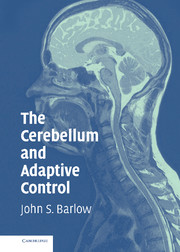Book contents
- Frontmatter
- Contents
- Preface
- Acknowledgments
- PART ONE ANATOMY AND PHYSIOLOGY OF THE CEREBELLAR SYSTEM
- PART TWO CEREBELLAR FUNCTIONS
- 7 Cerebellar Memory, Long-Term Depression, and Long-Term Potentiation
- 8 The Vestibulocerebellum and the Oculomotor System
- 9 The Cerebellum and Cognition
- 10 Timing Functions, Classical Conditioning, and Instrumental Conditioning
- 11 Cerebellar Pathology in Humans and Animals: Genetic Alterations
- 12 Specialized Cerebellum-Like Structures
- PART THREE MODELS AND THEORIES
- PART FOUR SUMMARY AND CONCLUSIONS
- APPENDIX A A Hybrid Analogue/Digital Multiplexer/Multiplier-Based Adaptive Signal Processor
- Author's Note
- Bibliography
- Index
12 - Specialized Cerebellum-Like Structures
Published online by Cambridge University Press: 28 October 2009
- Frontmatter
- Contents
- Preface
- Acknowledgments
- PART ONE ANATOMY AND PHYSIOLOGY OF THE CEREBELLAR SYSTEM
- PART TWO CEREBELLAR FUNCTIONS
- 7 Cerebellar Memory, Long-Term Depression, and Long-Term Potentiation
- 8 The Vestibulocerebellum and the Oculomotor System
- 9 The Cerebellum and Cognition
- 10 Timing Functions, Classical Conditioning, and Instrumental Conditioning
- 11 Cerebellar Pathology in Humans and Animals: Genetic Alterations
- 12 Specialized Cerebellum-Like Structures
- PART THREE MODELS AND THEORIES
- PART FOUR SUMMARY AND CONCLUSIONS
- APPENDIX A A Hybrid Analogue/Digital Multiplexer/Multiplier-Based Adaptive Signal Processor
- Author's Note
- Bibliography
- Index
Summary
There are cerebellum-like structures, including the valvula and the electroreceptive lateral line lobe (ELL), that are found in certain species of fish, as well as the mammalian dorsal cochlear nucleus, the architecture and molecular biology of which in some respects strikingly resemble that of the cerebellum of vertebrates. These merit separate discussion from the topics in Chapter 2 on comparative anatomy of the cerebellum.
The Valvula
In addition to a true cerebellum (corpus cerebelli), there are several structures in electroreceptive fish (particularly the mormyrids), including the valvula, that are recognizably cerebellar or cerebellar-like. This resemblance suggests that a comparative study of them could yield some general rules concerning the cerebellum (Bell and Szabo 1986). Thus, among the bony fishes (teleosts), the mormyrids, which comprise certain African fresh-water fish, possess a cerebellum that is divided into the usual parts, that is, the body (corpus cerebelli), and a part arranged quite differently, the valvula. This highly unusual structure is considered in some detail.
The valvula, which is actually unique to the mormyrids, can grow to relatively large dimensions, covering all other parts of the brain (Fig. 12.1). This enlargement has been considered to be related to the high degree of differentiation of the lateral line system in these fish, which have a weak electric organ in the tail. They also have electroreceptors, which to a large extent are constituted of lateral line organs distributed over the body, and which have become modified to be sensitive to electric fields in the water (Nieuwenhuys and Nicholson 1969a).
- Type
- Chapter
- Information
- The Cerebellum and Adaptive Control , pp. 148 - 166Publisher: Cambridge University PressPrint publication year: 2002

